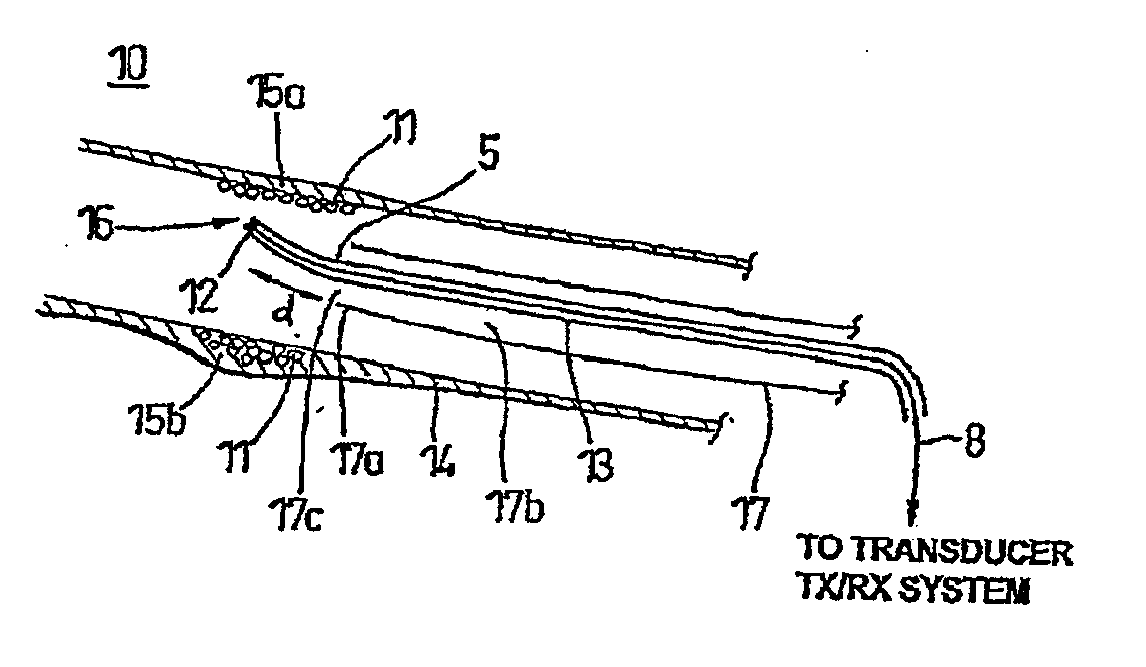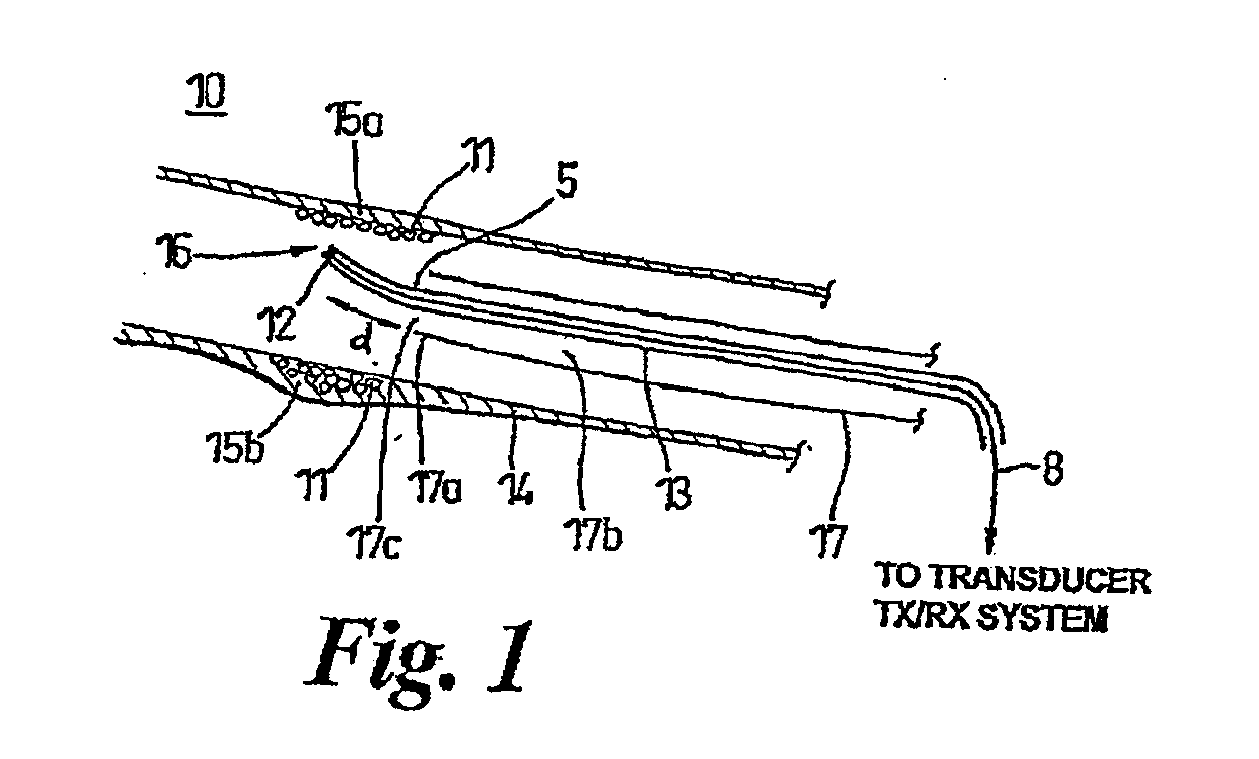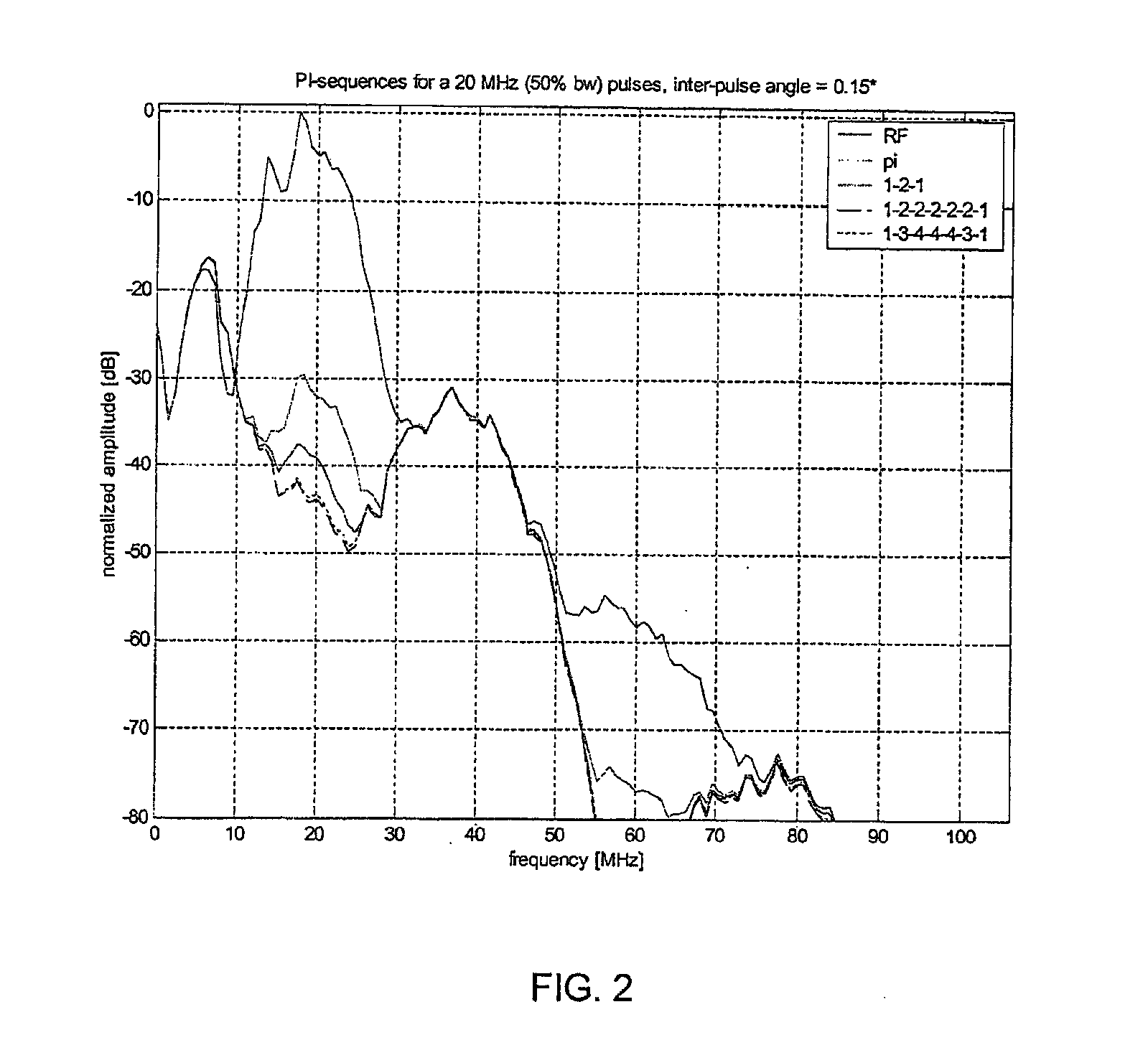Pulse Inversion Sequences For Nonlinear Imaging
a nonlinear imaging and inversion sequence technology, applied in the field of pulse inversion sequences for nonlinear imaging, can solve the problems of reducing the effectiveness of the basic pi technique, affecting and acoustic emission in the broadband, so as to reduce the effect of transducer motion
- Summary
- Abstract
- Description
- Claims
- Application Information
AI Technical Summary
Benefits of technology
Problems solved by technology
Method used
Image
Examples
Embodiment Construction
[0029] Provided herein are PI-sequences that achieve significant improvements on the fundamental suppression (of both tissue and contrast) for nonlinear image acquisitions, e.g., with a mechanically scanned transducer. These nonlinear acquisitions may include subharmonic, second harmonic, fundamental PI and dual-frequency-exposure acquisitions.
[0030] The PI-technique according to the invention applies weighting schemes for processing the received echoes from transmit pulses of alternating polarity to reduce the effect of transducer motion based on the assumption that optimal cancellation of one pulse is achieved by adding the average of two adjacent pulses of opposite polarity.
[0031] In an embodiment, the PI-technique applies a weighting scheme that results in a basic 3-pulse sequence of [P1−+2·P2++P3−], where [P+] is the response from a positive polarity pulse and [P−] the response of a negative (opposite) polarity pulse. Linear combinations of this basic 3-pulse sequence can be ...
PUM
 Login to View More
Login to View More Abstract
Description
Claims
Application Information
 Login to View More
Login to View More - R&D
- Intellectual Property
- Life Sciences
- Materials
- Tech Scout
- Unparalleled Data Quality
- Higher Quality Content
- 60% Fewer Hallucinations
Browse by: Latest US Patents, China's latest patents, Technical Efficacy Thesaurus, Application Domain, Technology Topic, Popular Technical Reports.
© 2025 PatSnap. All rights reserved.Legal|Privacy policy|Modern Slavery Act Transparency Statement|Sitemap|About US| Contact US: help@patsnap.com



